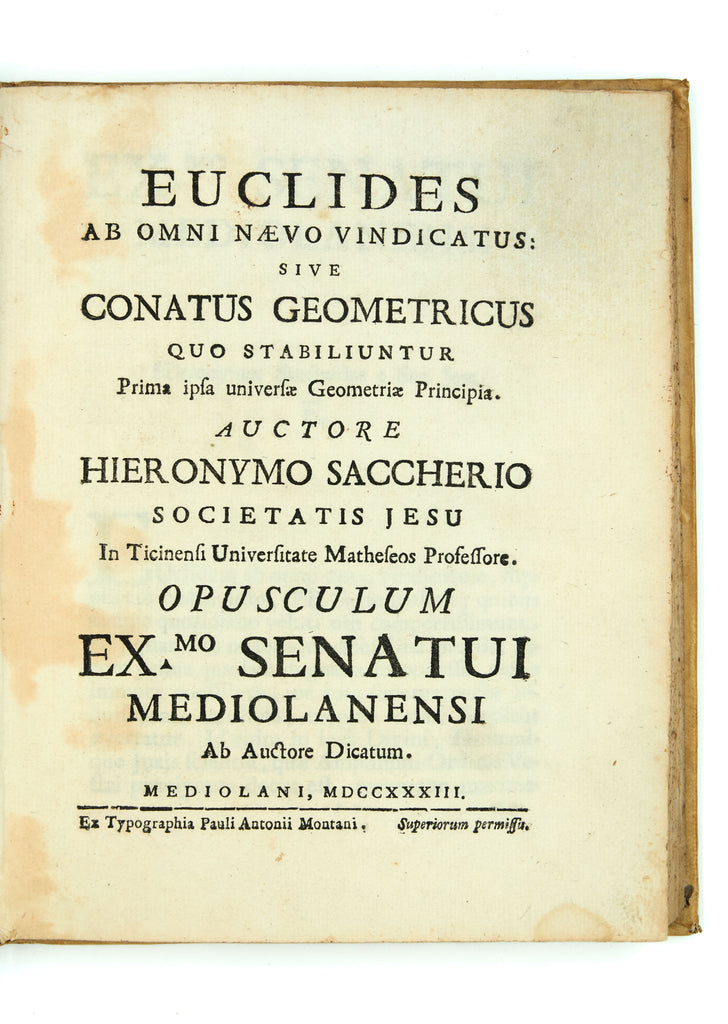Euclides ab omni nævo vindicatus
SACCHERI, Girolamo. [Ioannes Hieronymus Saccherius]



Mediolani: Ex Typographia Pauli Antonii Montani. 1733.
First edition. 4to. 227x175mm. pp. [XVI], 142 [2bl], 6 folding plates with 55 diagrams. Contemporary vellum, spine with four raised bands, compartments decorated with gilt flower motif. Covers a little marked and soiled. Some foxing and browning but otherwise very good internally. An excellent copy of a scarce book of which Worldcat locates only sixteen copies worldwide. We have traced no copies at auction.
Girolamo Saccheri (1667-1733) was a Jesuit priest and one of the most influential mathematicians of his time although the significance of his revolutionary ideas was not fully appreciated until 150 years after his death. As a young man, he taught at a Jesuit college in Milan where he encountered the mathematical work of the Ceva brothers. He spent most of his life teaching philosophy, theology and mathematics at the University of Pavia. Euclides ab omni nævo vindicatus is Saccheri's third work on mathematics and the work for which he is best known. As he died in 1733, it is possible that he never saw it published. Although Saccheri is regarded as the father of non-Euclidean geometry, he did not set out to disprove Euclid's parallel postulate but, rather, prove it. Indeed, as the title of the book makes clear, it is an attempt to vindicate Euclid. It was in rejecting a contradiction of Euclid's second postulate (that a terminated line can be produced indefinitely) that Saccheri raised the possibility that straight lines are finite. Although he did not realise it at the time, this idea is now regarded as the basis of elliptic and hyperbolic geometry which refutes Euclid's second and fifth postulates.
Almost exactly 100 years later Nikolai Lobachevsky and Janos Bolyai, independently of each other, published the foundational texts of non-Euclidean geometry, a term first used by their contemporary Carl Friedrich Gauss. But none of these men knew of Saccheri: as we said, this is a rare book. It was not until another Italian mathematician, Eugenio Beltrami, published a paper in 1889 comparing Saccheri's work on Euclid's parallel postulate to that of Lobachevsky and Bolyai, that he was brought to the attention of the mathematical world. The history of non-Euclidean geometry would have to be rewritten with Saccheri taking his place as its prime mover.
